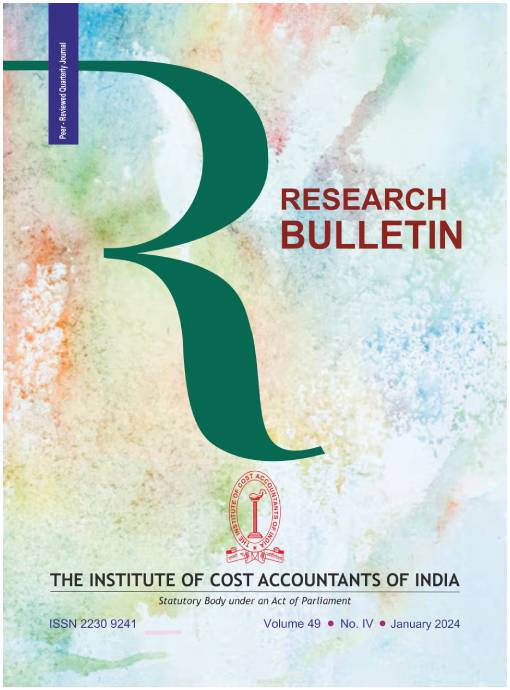Role of CMAs in Energy Audit
DOI:
https://doi.org/10.33516/maj.v59i11.70-75Keywords:
No Keywords.Abstract
In India, the role of Cost and Management Accountants (CMAs) in energy audits is gaining importance as businesses strive to align sustainability goals with financial management. With the increasing pressure to reduce carbon footprints, stricter regulatory requirements, and rising energy costs, companies are actively seeking ways to maximize energy usage and enhance efficiency.
CMAs, with their expertise in cost control and financial analysis, are well-positioned to help organizations achieve energy efficiency. They play a crucial role in ensuring compliance with energy regulations such as the Energy Conservation Act, 2001, and participate in initiatives like the Perform, Achieve, and Trade (PAT) scheme, which incentivizes energy efficiency in specific industries. By managing risks associated with energy consumption and ensuring long-term sustainability, CMAs contribute significantly to organizations' financial stability.
Downloads
Downloads
Published
How to Cite
Issue
Section
References
British Standards Institution (BSI) https://www.bsigroup.com/en-IN/ISO50001-Energy-Management/?utm_ source=google&utm_medium=cpc&utm_ campaign=339434567&gad_source=1&gclid=CjwKCAjw3624BhBAEiwAkxgTOuy3 Ucfm9w0l7beF8mv67-wU8-KWtZRMmfYL Nt06BkMEQPx5uwnrihoCYQ8QAvD_BwE , Date of Retrieval: 14-10-2024
Bureau of Energy Efficiency (BEE). “Energy Conservation Act, 2001.”https://beeindia.gov.in/en/about-us/ec-act , Date of Retrieval: 14-10-2024
Calu, D. A., Davidescu, A. A. M., Irimescu, A. M., Bâtcă, C., &Avram, V. (2023). IMPLEMENTATION OF ENERGY EFFICIENCY IMPROVEMENT MEASURES IN ROMANIA AND THE ROLE OF PROFESSIONAL ACCOUNTANTS. Amfiteatru Economic, 25(63), 479-502. doi:https://doi.org/10.24818/EA/2023/63/479
Dongellini, M., Marinosci, C., &Morini, G. L. (2014). Energy audit of an industrial site: a case study. Energy Procedia, 45, 424-433.
International Organization for Standardization (ISO). “ISO 50001: Energy Management Systems.”https://www.iso.org/iso-50001-energymanagement.html, Date of Retrieval: 14-10-2024
Krarti, M. (2020). Energy audit of building systems: an engineering approach. CRC press.
Kumar, A., Prakash, O., Chauhan, P. S., &Gautam, S. (2020). Energy management: Conservation and audits Taylor & Francis Group, Taylor & Francis Group.
Ministry of Power, Government of India. “Perform, Achieve, and Trade (PAT) Scheme.” https://powermin.gov.in.Date of Retrieval: 14-10-2024
Wagner, C. R. (1982, 08). How to conserve energy and save costs: In effect, an energy efficiency audit involves good, oldfashioned common sense. Management Accounting (Pre-1986), 64, 43. Retrieved from https://www.proquest.com/magazines/how-conserve-energy-save-costs/docview/198691126/se-2Date of Retrieval: 8-10-2024




 Free Sample
Free Sample Editorial Policy
Editorial Policy

